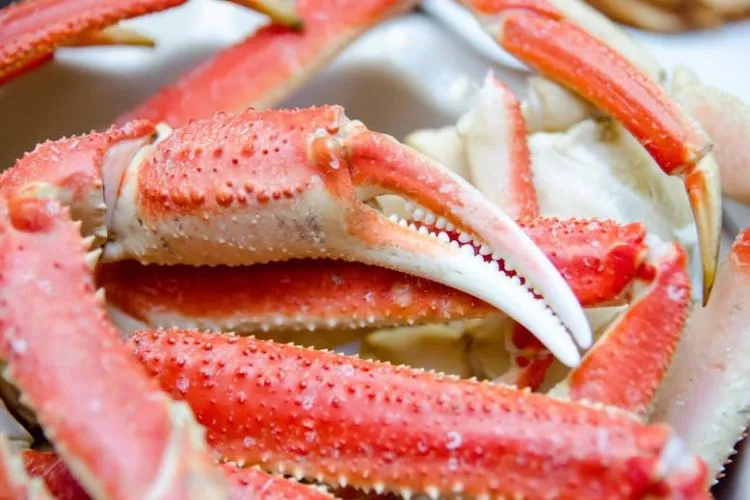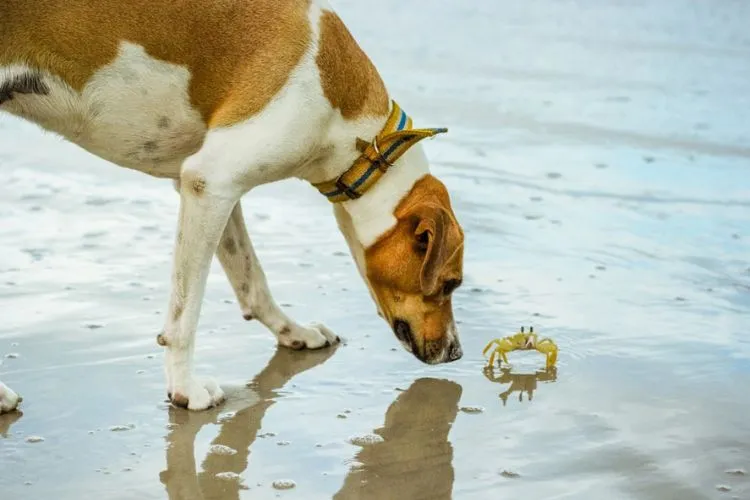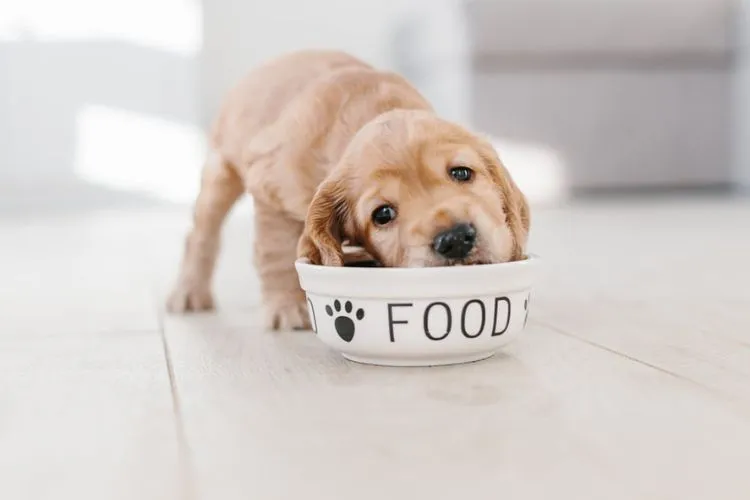Among the wide array of appetizers that grace our tables, crab rangoon stands out as a popular choice. Its delicious blend of creamy cheese and crab meat wrapped in a crispy wrapper is hard to resist.
But, can dogs eat crab rangoon?
Well, many dog owners to wonder if sharing a piece with their furry friend is a safe choice.
The concern for our pet’s health is always paramount. Let’s dive into this topic to uncover the facts.

🐾 What is Crab Rangoon?
Crab rangoon is a deep-fried dumpling filled with cream cheese, crab meat, or imitation crab, and sometimes onions and garlic.
While humans relish this appetizer, the combination of ingredients raises questions about its safety for dogs. Each component needs to be examined in the context of canine health.
🐾 Can Dogs Eat Crab Rangoon?
Crab meat, in its pure form, is not toxic to dogs. It is a good source of protein and omega-3 fatty acids, which can benefit your dog’s health.
However, the crab meat in crab rangoon is often mixed with mayonnaise or cream cheese and spices, which could pose health risks to dogs. Imitation crab, a common substitute, also contains additives and preservatives that might not be good for dogs.
🐾 The Risks of Feeding Dogs Crab Rangoon
Several factors make crab rangoon a less-than-ideal treat for your dog. Here, we’ll detail the primary concerns.

Lactose Intolerance and Dairy Issues
Many dogs are lactose intolerant. The cream cheese and other dairy products in crab rangoon can lead to unpleasant digestive upset, including diarrhea and vomiting.
High Caloric and Fat Content
Crab rangoon is rich in calories and fats. Dogs consuming high-calorie treats regularly are at risk of obesity, which invites a host of health issues like joint problems and diabetes.
Potential for Gastrointestinal Upset
Besides dairy, the garlic and onion often found in crab rangoon are toxic to dogs. These ingredients can cause gastrointestinal upset and, in severe cases, lead to conditions like anemia.
Risk of Allergies or Sensitivities
Dogs, like people, can have allergies or sensitivities to certain foods. Introducing crab rangoon to a dog’s diet might trigger an adverse reaction, especially if they have never had crab or dairy.
🐾 Symptoms to Watch For If Your Dog Eats Crab Rangoon
If your dog manages to sneak a bite of crab rangoon, observe them closely. Symptoms may include diarrhea, vomiting, excessive thirst, lethargy, or signs of discomfort. Contact your vet if you notice any of these symptoms, especially if they persist.

🐾 Healthier Alternatives to Crab Rangoon for Dogs
Offering safe and nutritious treats to your dog is pivotal. Consider lean meats like cooked chicken or turkey, which are excellent protein sources.
For a seafood treat, plain cooked salmon or plain crab meat in small amounts can be beneficial, thanks to their omega-3 fats.
🐾 Safe Food Handling and Preparation for Dogs
Ensuring the safety of food given to dogs is as crucial as selecting the right type of food. Here are key points to ensure safe food handling and preparation:
- Avoid Harmful Cooking Oils: Opt for healthier alternatives like coconut or olive oil when cooking for dogs. Avoid oils with high polyunsaturated fats, such as canola or soybean oil, which might cause inflammation.
- Proper Cooking to Avoid Bacterial Contamination:
- Fully cook all meats to kill potential pathogens like Salmonella or E. coli.
- Avoid feeding raw or undercooked eggs and meats due to the risk of bacterial contamination.
- Wash Fruits and Vegetables: Always rinse fruits and vegetables under running water to remove pesticides and chemicals that could be harmful to dogs.
- Beware of Bones: When preparing meat, make sure to remove all bones as they can splinter and cause internal damage or blockage.
- Keep Kitchen Surfaces Clean: Clean all kitchen surfaces, utensils, and your hands both before and after preparing your dog’s food to prevent cross-contamination.
Adhering to these food safety measures will help protect your dog from foodborne illnesses and ensure they receive nutrition without any adverse effects.
🐾 Guidelines for Introducing New Foods to Your Dog
Introducing new foods to your dog requires careful planning and observance. Here are some guidelines that can help:

- Start Small: Begin with small amounts. Adding too much new food to a dog’s diet can lead to digestive upset.
- Monitor Your Dog: Keep a close eye on your dog after introducing a new food. Observe for any changes in their behavior. Watch for signs of discomfort, such as vomiting, diarrhea, excessive gas, loss of appetite, or lethargy.
- Spread Out New Foods: Never introduce more than one new food at a time. By introducing foods one at a time, you can tell what may be causing a reaction if one occurs.
- Acclimatization Period: Allow an acclimatization period of at least a week before fully replacing the old food with a new one in their diet. If any adverse reactions occur, discontinue the new food immediately.
- Consult Your Vet: If your dog shows any adverse reactions or if you’re uncertain of a food’s safety, consult your vet for advice.
Following these guidelines will make new food introduction a smooth and safe process for your furry friend.
🐾 Frequently Asked Questions (FAQs)
While a tiny amount of cream cheese is unlikely to harm your dog, its high fat and dairy content might lead to digestive upset. It’s best to opt for dog-friendly treats instead.
Yes, many human foods are safe and healthy for dogs. These include carrot sticks, apple slices (without seeds), and plain, cooked lean meats. Always introduce new foods slowly to avoid digestive issues.
Monitor your dog for any signs of discomfort, such as vomiting or diarrhea. If symptoms appear or your dog seems unwell, consult your vet.
Conclusion:
While it’s tempting to share our favorite treats with our dogs, crab rangoon should stay off their menu. The risks far outweigh the potential benefits.
By focusing on dog-safe alternatives, we can ensure our pets enjoy their treats without any adverse effects.
Always remember, when in doubt, it’s best to reach out to a veterinarian for advice tailored to your pet’s specific health needs.
This comprehensive guide serves as a resource for responsible pet ownership, helping dog owners make informed decisions about their pet’s diet.
Remember, what’s tasty for humans isn’t always suitable for our canine companions.
